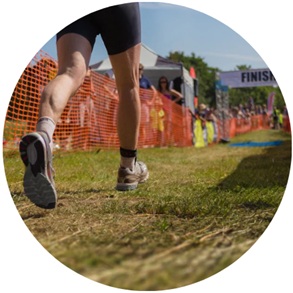Running Experience Survey 2025
Thank yous
This project was carried out independently, without any sponsorship or financial backing. As a result, it has relied heavily on the generosity and support of the British running community.
I’m especially grateful to the many club secretaries, chairs, social media managers and other officials who helped share the survey with their members.
And of course, sincere thanks to everyone who took the time to complete it and share their views. I hope the report reflects some of your own experiences, and perhaps gives you a fresh perspective on the wider running community of which we are part.
Best wishes,
Neil

Methodological notes
Methodology
This report is based on data collected through the 2025 Running Experience Survey, designed to provide an overview of running and racing experiences across Britain. The survey combined quantitative and qualitative questions to explore a wide range of topics, with a particular focus on race participation and satisfaction.
Survey Design
The survey aimed to capture key trends, behaviours and attitudes among UK runners in 2025. It covered topics including racing practices and preferences, race satisfaction scores, use of technology and social media, dietary habits, the economic and environmental impact of racing, and runner motivations and identities. The survey was conducted online and employed a mixed-methods approach, combining structured multiple-choice and Likert-scale items with open-text responses.
Survey Instrument
The questionnaire consisted of 112 questions and was available in English only. Question types included multiple choice, rating scales, ranking questions, and open-ended text boxes. The estimated completion time was around 10 minutes. A pilot version of the survey was tested before launch to ensure clarity and usability.
Sampling and Recruitment
The survey targeted all UK-based runners, regardless of experience level, club affiliation, or frequency of participation. A non-probability sampling approach was used: the survey was distributed via social media platforms and shared by running clubs and organisations contacted directly by the researcher. This convenience-based and snowball recruitment approach yielded a total of 2,112 valid responses.
Fieldwork
Data collection took place between 15 May and 31 July 2025. The survey was hosted on Google Forms, and no incentives or rewards were offered to participants.
Data Processing
Responses were reviewed for completeness and quality. Incomplete or partial responses were handled case by case — some were excluded, while others were retained with missing values imputed where appropriate. No responses were removed for suspected low quality or duplication. Missing data was treated variably depending on context, using a combination of exclusion, imputation, and coding as missing. Open-text responses were cleaned and recoded where necessary for internal analysis, although these do not feature in this report.
Weighting
No weighting has been applied to the data presented in this report. However, the sample is known to over-represent older runners and club-affiliated runners. These biases can be accounted for through weighting based on national participation benchmarks (e.g. Sport England Active Lives data) in any bespoke analysis offered separately.
Analysis
Data analysis was conducted using Excel, SPSS, and R. A range of statistical methods were employed, including descriptive statistics, cross-tabulations, significance testing, clustering, and principal component analysis (PCA). A key output of the analysis was the development of a typology of four distinct motivational types of runner. This was based on patterns of responses to a wide range of attitudinal and behavioural questions, and provides a framework for understanding how different groups engage with running and racing in the UK.
Visualisations throughout the report were created using Flourish.
Running Experience Survey
© Neil Baxter 2025
Please always cite using: Baxter, N. (2025). Running Experience Survey. Running Studies. https://runningstudies.co.uk/running-experience-survey